This article is published in Aviation Week & Space Technology and is free to read until Aug 29, 2024. If you want to read more articles from this publication, please click the link to subscribe.
EAA AirVenture Oshkosh Celebrates History, Safety And Innovation
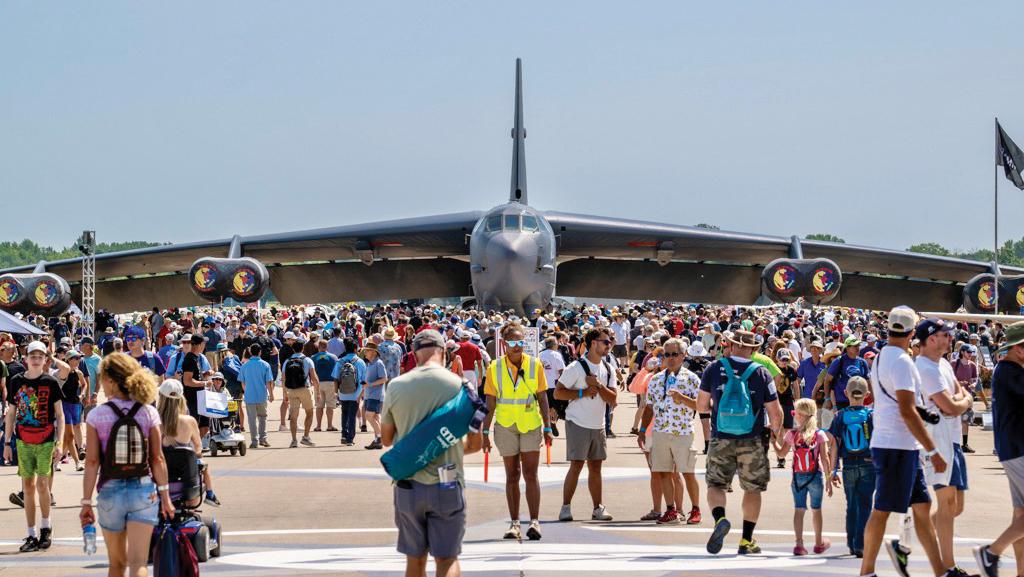
Crowds entering AirVenture on Celebration Way were greeted by a B-52H Stratofortress from the U.S. Air Force Materiel Command, parked at the entrance to Boeing Plaza.
This year’s Experimental Aircraft Association’s AirVenture Oshkosh fly-in convention commemorated milestones, such as the Royal Canadian Air Force’s 100th birthday and the 80th anniversary of the Normandy landings on D-Day, in a tribute called “Turning the Tide.”
Organizers expect this year’s event, sponsored by the Experimental Aircraft Association (EAA) and held July 22-28 at Wittman Regional Airport in Oshkosh, to match last year’s record attendance of more than 670,000, including an estimated 40,000 campers. The 2023 show also attracted more than 10,000 aircraft to Wittman Regional Airport and other airports in the east central Wisconsin area, including 3,365 showplanes. At Wittman alone, there were an average of about 148 takeoffs/landings per hour when the airport was open over the seven-day event a year ago.
- See more AirVenture coverage at AviationWeek.com/AirVenture-2024
The software outage related to a CrowdStrike security update that plagued commercial airlines and other entities leading up to this year’s AirVenture meant that some who had planned to attend were held up by canceled flights. That said, the annual event underscored the important role that private aviation—which was mostly not affected by the software problems—can play, some attendees noted. Charter providers reported that demand increased over the days of the outage as well.
- FAA promoted safety with hypoxia simulator
- Oshkosh debuts: Harbour Air eBeaver, Citation CJ3 Gen 2 and GE Aerospace Catalyst turboprop engine
Accidents and Safety
This year’s AirVenture was visited by tragedy on opening day when a Lancair ES crashed in a farm field about 2 mi. south of Wittman Regional Airport’s Runway 36. A fire engulfed the aircraft, and the two occupants died.
The crash echoes two separate fatal accidents at Air-Venture in 2023. Divers recovered two bodies from Lake Winnebago east of Oshkosh last year after a North American T-6 Texan plunged into the lake following departure from the airport. On the same day, a RotorWay Exec 162F kit helicopter and an ELA 10 Eclipse gyroplane collided in midair at the south end of AirVenture’s flight line. Two people were killed and two were injured in the accident.
To promote safety, the FAA this year brought its hypoxia simulator to AirVenture, which replicates the air at 25,000 ft. The agency held training courses throughout the week teaching pilots how to recognize hypoxia symptoms and how to respond when flying an aircraft. It was a popular training exercise, and spots filled up quickly. Each person received a briefing on what to expect and a debriefing afterward to compare symptoms and experiences.
“Everyone has a different reaction,” says Ezekiel Duran, the FAA’s training specialist, adding that it is good for pilots to experience the symptoms on the ground so they can recognize them should they occur in the air.
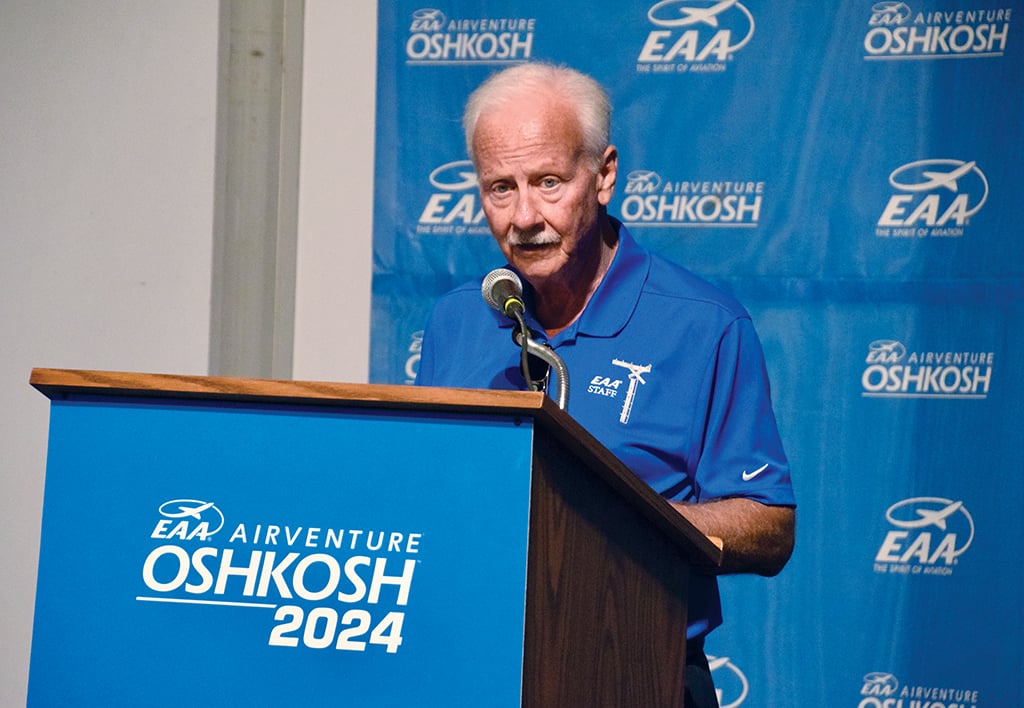
Aircraft Debuts
Several aircraft made their AirVenture debut, including the Harbour Air eBeaver, a modified De Havilland Canada DHC-2 powered by a MagniX Magni650 electric propulsion unit. The aircraft was stationed at the AirVenture Seaplane Base on the west shore of Lake Winnebago.
Textron Aviation debuted its Citation CJ3 Gen2, which it expects to receive FAA certification and begin deliveries in mid-2025. The company also announced major upgrades for its Cessna Caravan and Grand Caravan EX turboprop aircraft. Upgrades include an enhanced flight deck with brighter screens, all-black backlit panels, a wider boarding ladder, USB-C charging ports and other amenities.
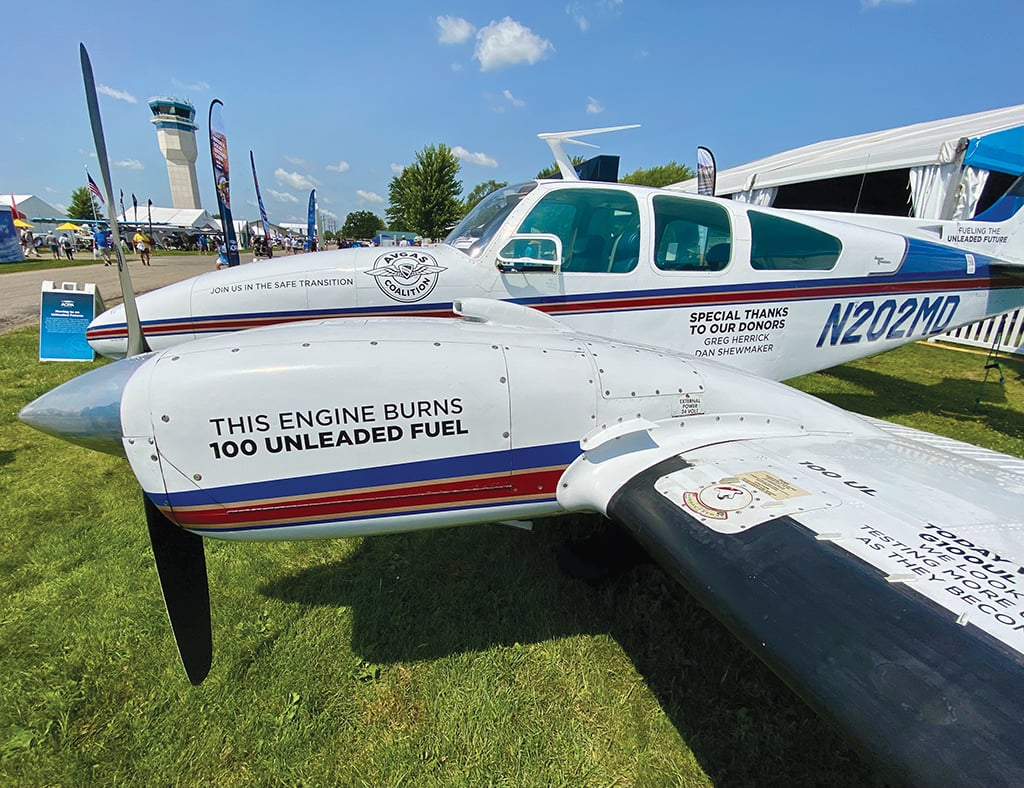
Also making its first appearance at Oshkosh was GE Aerospace’s Catalyst turboprop engine, which will power Textron Aviation’s Beechcraft Denali. GE Aerospace officials say certification is 80% complete, and they expect the engine to achieve FAA approval by year-end.
Cirrus Aircraft, meanwhile, celebrated the 10,000th delivery of its SR series with a limited edition aircraft on display at the show. The first delivery occurred in 1999.
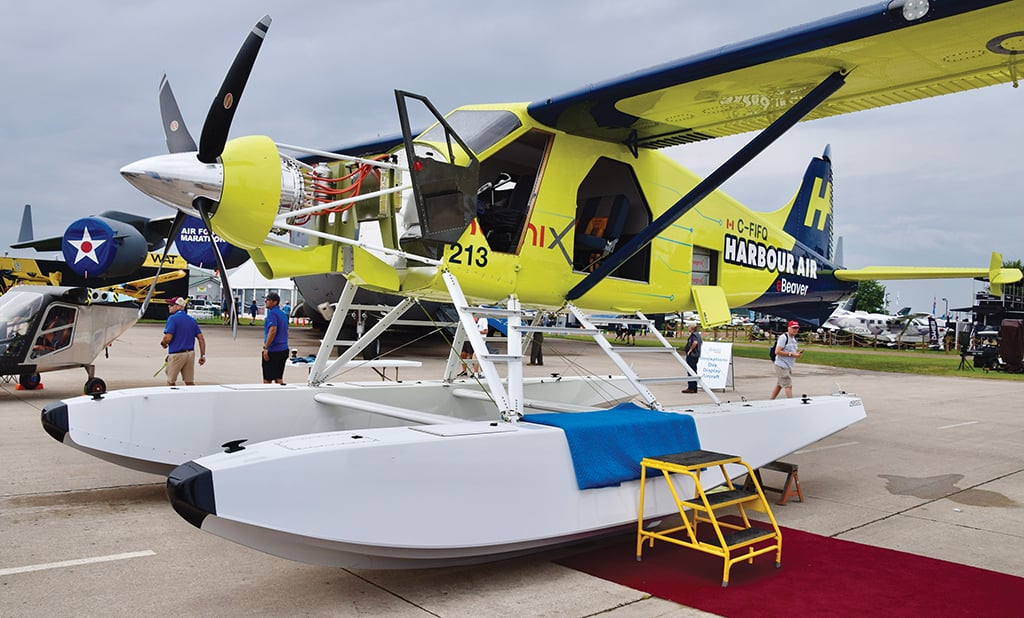
Much like previous iterations of AirVenture, NASA’s booth became a popular stop for many Oshkosh attendees. The popularity was assuredly fueled by excitement for the Artemis II mission to send astronauts around the Moon and back.
“The challenge, of course, is the heat shield,” Administrator Bill Nelson said in a media briefing at AirVenture. “It performed in a way that was perfectly safe had the astronauts been on Artemis I. But there was some different charring than we had expected. We know the reason for that now, and the engineers, the safety people, are all doing an evaluation, and we will have that very soon, with regard to the Artemis II flight.”
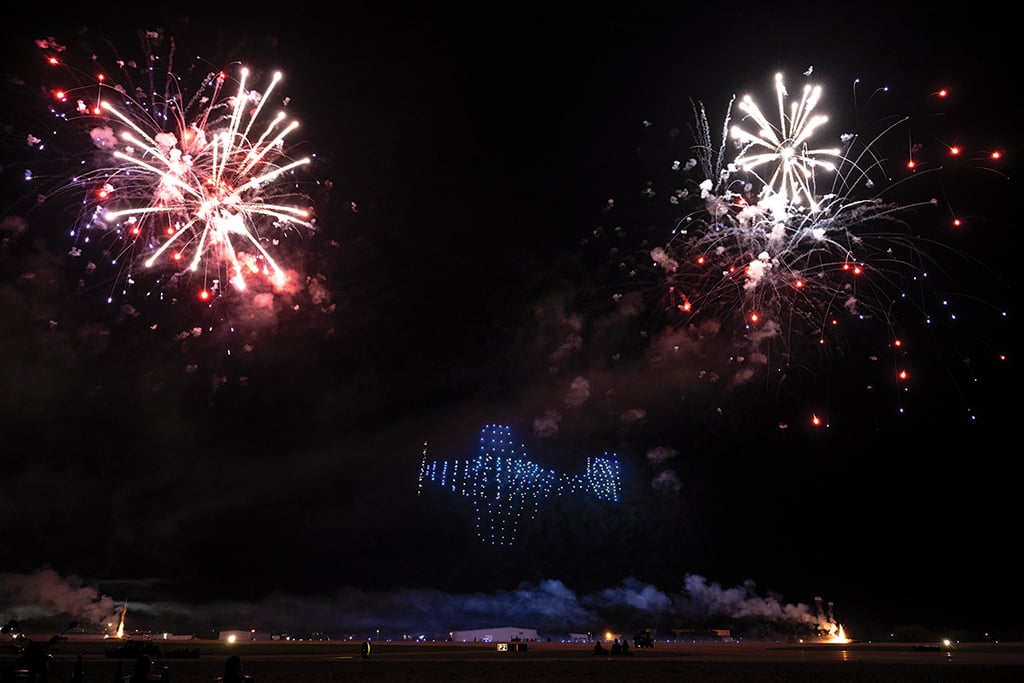
In addition to the historic space mission, NASA Test Pilots Nils Larson and Jim Less held a forum stage session to discuss the development of the X-59—NASA’s “quiet” supersonic jet. In its later stages of testing, the X-59 is planned to fly over a variety of locations across the U.S. to measure the impact of the jet’s sonic “thump.”
“They’ll do urban areas, they’ll do suburban areas, they’ll do rural areas, they’ll do wilderness areas—all to see what is the reaction on the ground,” Nelson said. “If it turns out like we think it’s going to turn out, it will be like a muffled sound instead of that bang of the sonic boom that you hear now, which is quite jarring.”






